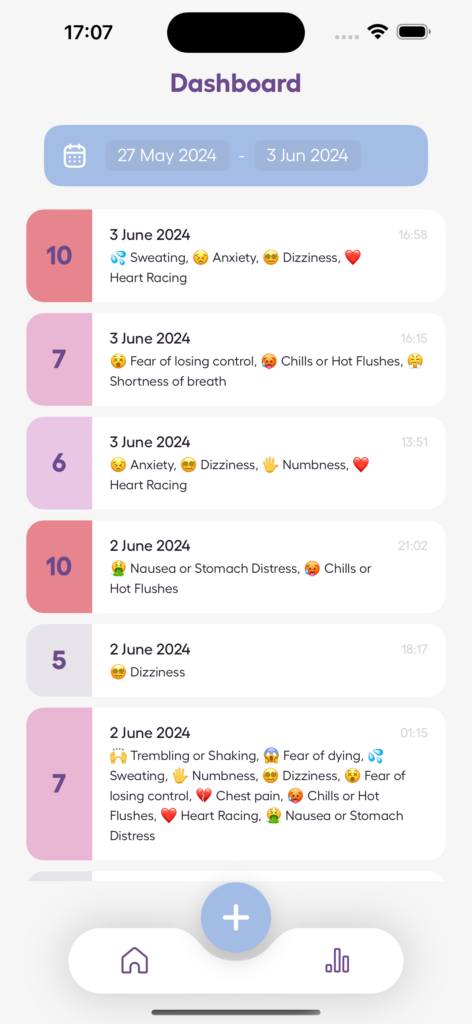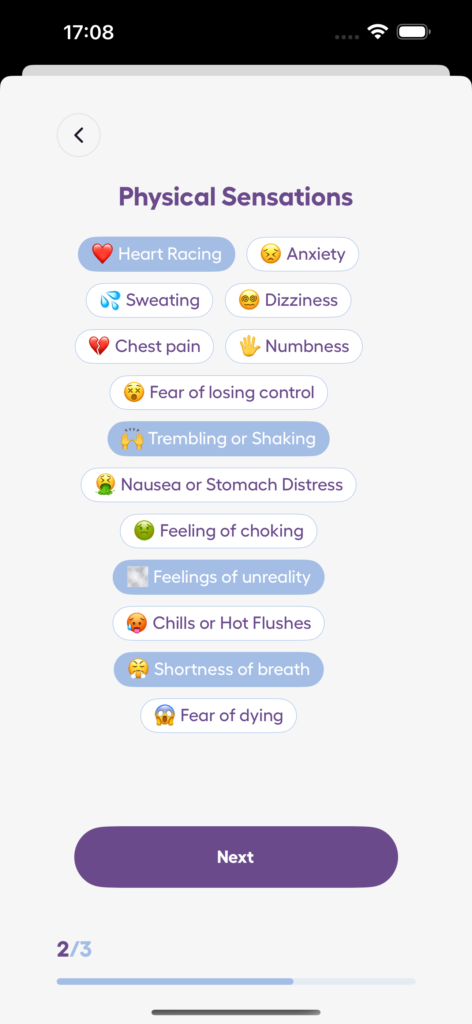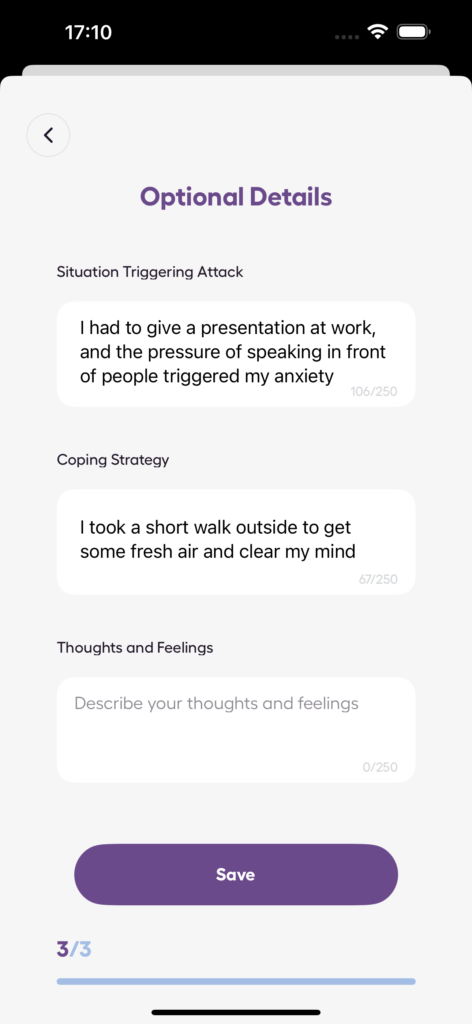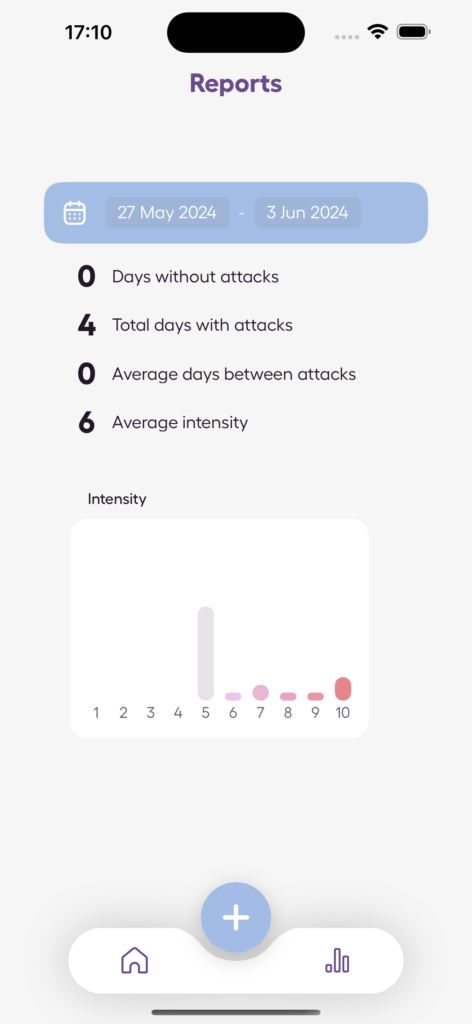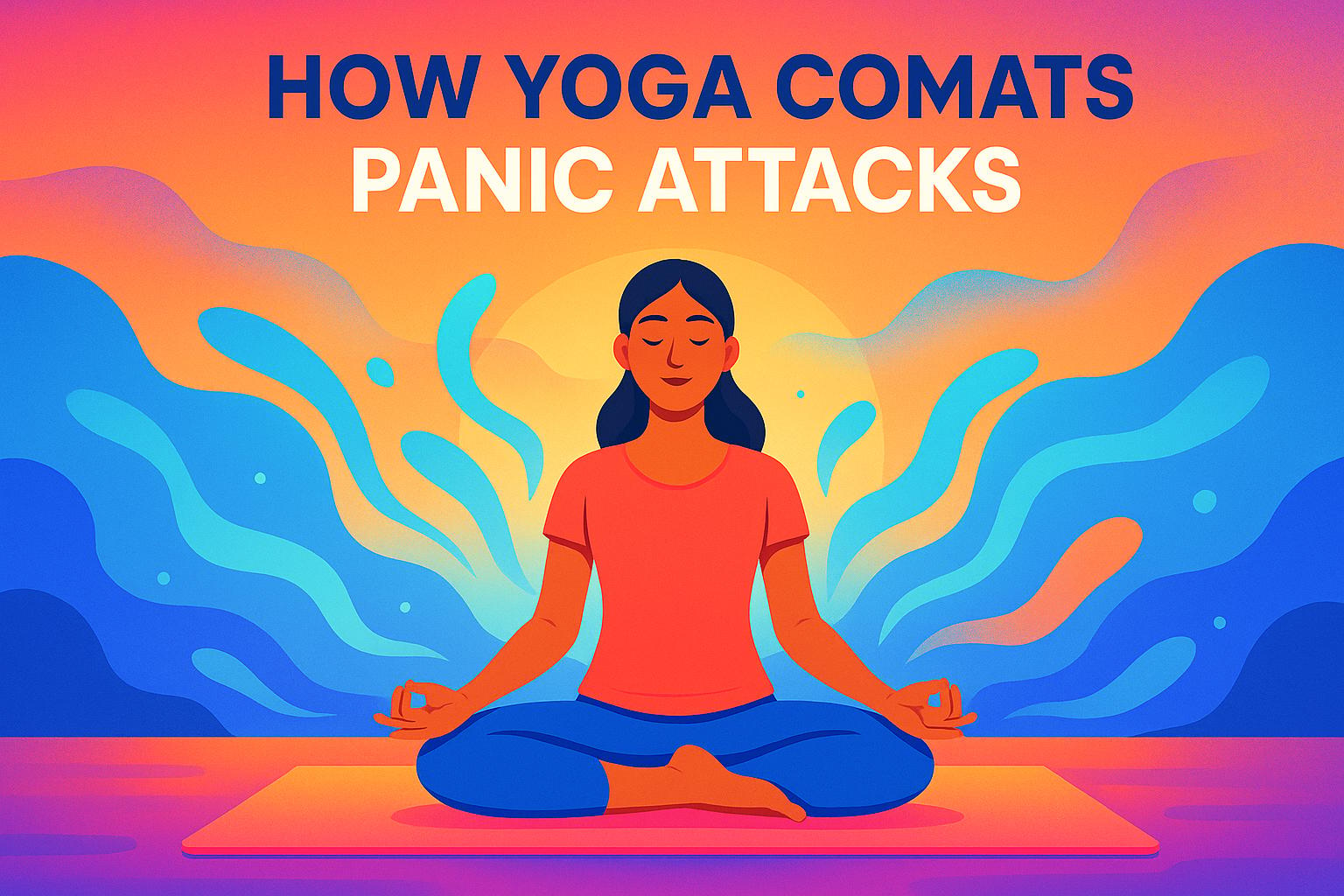Mindfulness can help teens manage stress by focusing on the present and calming their minds. Here’s how:
- Why Teens Are Stressed: Academic pressure, social media, family expectations, peer relationships, and worries about the future are common triggers.
- What Mindfulness Does: Helps teens stay present, manage emotions, and avoid anxious thought cycles.
- Simple Techniques:
- Breathing Exercises: Techniques like 4-7-8 breathing or box breathing (4-4-4-4) can quickly reduce stress.
- Meditation: Practices like body scan meditation promote relaxation and emotional regulation.
- Active Mindfulness: Walking meditation, journaling, or gratitude exercises can fit into busy schedules.
- Challenges: Teens may struggle with distractions, time constraints, or resistance but can start with short, simple sessions to build focus.
- Tracking Progress: Apps like Anxiety Journal help monitor stress, track triggers, and measure improvements through tools like GAD-7 tests.
Mindfulness is easy to start and can make a big difference when practiced consistently.
How to Calm Anxiety | Mindfulness Techniques for Teenagers
Mindfulness Effects on Teen Stress
Guided breathing exercises are a practical way for teens to handle stress. Focusing on controlled breathing can interrupt anxious thoughts and help lower stress levels.
One popular method is box breathing. This technique involves inhaling, holding your breath, exhaling, and pausing – all for equal counts of four (4-4-4-4). It helps redirect attention from stressful thoughts and creates a sense of calm almost instantly.
Studies also highlight the benefits of techniques like box breathing, showing that they are simple yet effective tools for quickly easing anxiety in teens.
5 Mindfulness Methods for Teens
Basic Breathing Techniques
Controlled breathing is a simple way to practice mindfulness. One effective method is the 4‑7‑8 breathing technique: inhale through your nose for 4 seconds, hold your breath for 7 seconds, and exhale through your mouth for 8 seconds. This technique can be easily added to your day – try it during study breaks or before a big test to calm your nerves. Once you’ve mastered this, you can move on to meditation practices to deepen your focus.
Meditation and Mental Imagery
Guided meditation is a straightforward way to practice mindfulness. A popular method is body scan meditation, where you focus on each part of your body, from your toes to your head, letting go of tension as you go. This practice not only helps you relax but also interrupts stress patterns, making it easier to manage anxiety.
"In March 2023, Anxiety Journal’s client, a group of students in California, reduced their self-reported anxiety levels by 30% over 4 weeks by using the app’s guided breathing exercises and daily journaling features. The project, led by school counselor Sarah Miller, involved 50 students aged 14-18 who tracked their anxiety triggers and practiced mindfulness techniques."
If sitting still isn’t your thing, there are active mindfulness practices that might suit you better.
Active Mindfulness Options
Here are three easy ways to stay mindful while on the move:
| Activity | Time Needed | Ideal Time |
|---|---|---|
| Walking Meditation | 10–15 minutes | Before school or after studying |
| Mindful Journaling | 5–10 minutes | During evening reflection |
| Gratitude Practice | 3–5 minutes | In the morning or at bedtime |
- Walking meditation focuses on each step you take, paying attention to how your feet feel as they touch the ground. You can fit this into your day by practicing it during a walk to school or between classes.
- Mindful journaling helps you reflect on your emotions and experiences without judgment. It’s a great way to identify stress triggers and develop healthy coping habits.
- Gratitude practice involves writing down three specific things you’re thankful for each day. This simple habit shifts your focus from what’s stressing you out to what’s going well in your life.
These active techniques work well alongside breathing and meditation, giving teens a variety of tools to manage stress effectively.
sbb-itb-b1dedcc
What Works and What Doesn’t in Teen Mindfulness
Positive Outcomes
Mindfulness techniques can help teenagers manage stress and anxiety effectively. Here’s what has been shown to work:
- Breathing exercises: These techniques enhance focus and calmness.
- Consistent practice: Regular mindfulness sessions improve emotional regulation.
- Stress tracking: Combining mindfulness with tools to monitor stress levels leads to reduced anxiety.
Common Challenges
Despite its benefits, mindfulness practice isn’t always easy for teens. Some common hurdles include:
- Initial resistance: Many teens find it hard to sit still or concentrate during their first attempts.
- Time constraints: Busy schedules filled with school, extracurriculars, and social activities make it tough to find time for mindfulness.
- Distractions: Phones, social media, and racing thoughts often interfere with focus. Starting with short sessions (3-5 minutes) can help build concentration over time.
Results vs. Challenges Chart
| Aspect | What Works | Common Challenges | Suggested Solutions |
|---|---|---|---|
| Focus Level | Guided breathing techniques | Digital distractions | Start with structured exercises |
| Emotional Awareness | Mood tracking and journaling | Recognizing stress patterns | Use AI tools for personalized insights |
"In March 2023, Anxiety Journal’s client, a group of students in California, reduced their self-reported anxiety levels by 30% over 4 weeks by using the app’s guided breathing exercises and daily journaling features. The project, led by school counselor Sarah Miller, involved 50 students aged 14-18 who tracked their anxiety triggers and practiced mindfulness techniques."
Using Anxiety Journal to Monitor Progress
Tracking your progress can help fine-tune stress management efforts and build on mindfulness practices.
Why Track Stress and Mindfulness
Keeping track of stress and mindfulness activities can uncover patterns, highlight triggers, and show how mindfulness impacts your daily life. Here’s how it helps:
- Spot Patterns: Understand what triggers stress day-to-day.
- Track Progress: See how you’re improving over time.
- Evaluate Techniques: Learn which strategies work best for you.
- Stay Consistent: Build accountability for regular mindfulness practice.
Anxiety Journal App Features
The Anxiety Journal app is designed to help users track mindfulness and stress levels while offering clear, actionable insights.
| Feature | Function | Benefit for Teens |
|---|---|---|
| Quick Entry Logging | Record stress levels and mindfulness sessions quickly | Encourages consistent tracking habits |
| AI-Powered Analysis | Detect patterns in anxiety triggers and responses | Offers personalized stress management insights |
| Progress Reports | Visualize changes in stress levels over time | Highlights the effectiveness of mindfulness efforts |
| GAD-7 Tests | Assess anxiety levels using clinical measures | Tracks measurable improvements |
The app also includes guided breathing exercises like box breathing and the 4-4-4-4 method, offering immediate stress relief. Teens can practice these techniques during high-stress moments and log how effective they are.
To make the most of the app:
- Log your stress levels daily.
- Note any specific triggers.
- Review your progress weekly.
- Use guided breathing exercises whenever needed.
This system not only helps reinforce mindfulness habits but also provides valuable insights into stress patterns, making it easier to adapt and improve your strategies.
Next Steps for Teens and Mindfulness
Here’s a straightforward plan to help manage stress effectively:
Start with Breathing Exercises
Techniques like box breathing (the 4-4-4-4 method) can quickly ease stress and are easy to practice anywhere. Dedicate 5 minutes each morning to guided breathing.
Track Your Stress Levels
Using tools like the Anxiety Journal app can help you stay on top of your mindfulness journey. The app allows you to:
- Log daily stress levels and mindfulness activities
- Record stress triggers
- Access breathing exercises for moments of overwhelm
This makes it easier to monitor your progress and see how mindfulness is helping.
Monitor Your Growth
The Anxiety Journal app also includes the GAD-7 test, which can help you:
- Establish a baseline for your stress levels
- Track changes over time
- Spot patterns in your stress
- Get personalized insights powered by AI
| Time Period | Suggested Actions |
|---|---|
| First Week | Practice breathing exercises 2-3 times daily |
| Week 2-3 | Start tracking mood and stress levels daily |
| Month 1 | Complete a weekly GAD-7 assessment |
| Ongoing | Review monthly progress and adjust strategies |
Build a Routine That Works
Incorporate mindfulness into your daily life by pairing it with regular activities. For example:
- During your morning routine
- Before tackling homework
- After school
- Right before bed
The key is consistency, not perfection. Even a few mindful minutes can help reduce stress. Use the Anxiety Journal app to celebrate small milestones and stay motivated as you work on these important habits.


